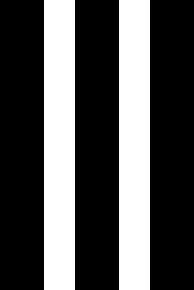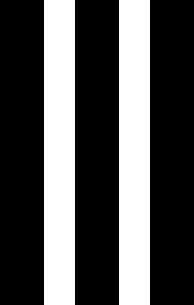It’s possible to have a monopoly on stripes?
Adidas™ seems to try, albeit with some difficulty.
Three parallel stripes in the collective imagination distinguish the mark of a famous German company founded exactly seventy years ago, in August 1948 by Adolf Dassler, adidas™. One of the most famous sports brands in the world in the sportswear segment after the american Nike ™ which, in terms of turnover, is worth something like 23 billion euros.
However, the Court of the European Union, based in Luxembourg, does not appear to be of the same opinion, which in the judgment of 19 June 2019 confirmed the annulment decision, rejecting the appeal presented by adidas™ against the EUIPO decision to cancel the registration of the accepted trademark at first but then withdrawn in 2016 as it is devoid of any distinctive character, inherent and acquired through use throughout the EU.
The dispute began with the appeal presented by Shoe Branding Europe™, which markets a shoe with 2 parallel stripes. This with the Belgian company, is the last, seen that over the years adidas™ has sued Abercrombie & Fitch™, Juicy Couture™ and Ralph Lauren™.

According to EUIPO1, the mark should not have been registered. In particular, adidas™ has not shown that the brand had acquired distinctive character through use throughout the EU. The court ruled that the three parallel stripes applied in any direction did not prove that this trademark had acquired, a distinctive character following the use made of it.

According to EUIPO1, the mark should not have been registered. In particular, adidas™ has not shown that the brand had acquired distinctive character through use throughout the EU. The court ruled that the three parallel stripes applied in any direction did not prove that this trademark had acquired, a distinctive character following the use made of it.

According to EUIPO1, the mark should not have been registered. In particular, adidas™ has not shown that the brand had acquired distinctive character through use throughout the EU. The court ruled that the three parallel stripes applied in any direction did not prove that this trademark had acquired, a distinctive character following the use made of it.
The Court finds, first, that the mark is not a model composed of a series of regularly repetitive elements, but a normal figurative mark. The Court also notes that forms of use which do not respect the other essential characteristics of the mark, such as its color combination (black stripes on a white background), cannot be taken into consideration.
Therefore, the EUIPO has correctly rejected numerous evidence produced by adidas™ due to the fact that it concerns other signs, such as, in particular, signs for which the color combination had been reversed (white stripes on a black background).
Finally, the Court notes that EUIPO did not make an error of assessment in finding that adidas™ had not shown that the mark in question had been used throughout the European Union and that it had acquired, throughout that territory, distinctive character due to the use made of it.
From the evidence produced by adidas™, the only evidence that is, to a certain extent, relevant only concerns five Member States (market surveys conducted by adidas™ in Germany, Estonia, Spain, France and Romania), and cannot in this case, be extrapolated to the entire territory of the EU. adidas™ can now make an additional appeal through The Court of Justice of the European Union (CJEU).

Some uses of the three parallel stripes patented by adidas™
However, the ‘difficulties’ of adidas™ are not present only in Europe.
In fact, there are different causes or appeals against the German giant that try to counter the attempt and the approach defined by some “Bully” by adidas™, to claim ownership of the strips in a broader way, essentially stating that ‘no item of clothing can have any number of strips in any position without violating its brands’.
One of these was filed in 2017 and is still open, Forever 21™ – Los Angeles-based fashion chain, which generates over $4 billion in revenue per year selling runway copycats to young adults for cheap – who claim the right to be able to use the strips in a purely ornamental way without them performing a function of identifying the source (that is, the strips are simply used as strips and are not used as a trademark).

After more than 4 decades, Stan Smith is still the most loved sneaker
In an attempt to add another federal registration to its sturdy arsenal, in July 2018 adidas™ presented an application for a trademark to the United States Patent and Trademark Office which ‘consists of a classic tennis shoe profile – in practice the design of the famous Stan Smith sneaker of the brand – with three rows of perforations positioned in the area between the laces and the sole, stitching on the sides of each shoe that contains the perforations, a mustache-shaped patch on the heel and a flat sole’. This last application joins a long list of recordings already issued for three parallel stripes that run along the sleeve of a shirt, a jacket and the length of each leg of the trousers or shorts.
We are confident that adidas™ will continue to vigorously protect its rights and will continue to act in the event of a breach and as the recently filed trademark application suggests, will continue to work to accumulate records for such trademark rights.
1 The EUIPO is the European Union Intellectual Property Office responsible for managing EU trade marks and registered Community designs.
UPDATE
In late September, adidas™ asked the court to issue a summary judgment in its favor, but the court has not yet decided on it.
In the same days, the company Forever 21 files for Chapter 11, the protection against bankruptcies which allows companies that use it for a restructuring following a serious financial distress.
The Registration Process of a Trademark at EUIPO
Once deposited at the European Union Intellectual Property Office (EUIPO), the trademark will be subject to official procedures to check if it can be registered. Several phases are planned
Presentation of the Application
Receipt of the Application
Exam Phase
Publication of the Application
Period of Opposition
End of Opposition Period
Trademark Registration
Publication of the Registered Trademark
The Registration Process of a Trademark at EUIPO
Once deposited at the European Union Intellectual Property Office (EUIPO), the trademark will be subject to official procedures to check if it can be registered. Several phases are planned
Presentation of the Application
Receipt of the Application
Exam Phase
Publication of the Application
Period of Opposition
End of Opposition Period
Trademark Registration
Publication of the Registered Trademark
Related Posts

